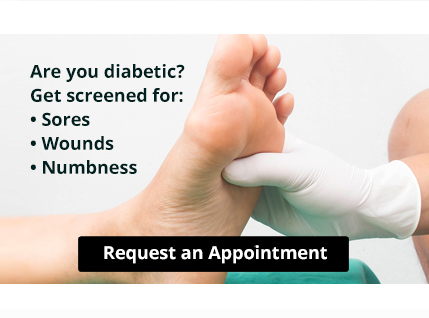Items filtered by date: February 2025
How Feet Change with Age

As people age, their feet undergo natural changes that can provide valuable insights into overall health. The arches may flatten, leading to a condition known as fallen arches, which can cause pain and affect posture. The skin on the feet may become thinner, drier, and more prone to cracking, increasing the risk of infections. Toenails may thicken or become more brittle, while bunions or hammertoes can develop due to misalignment of the toes. These changes can also signal underlying health issues, such as poor circulation, arthritis, or diabetes. For instance, numbness or tingling in the feet can indicate nerve damage, while changes in skin color might suggest circulation problems. If you have foot pain or notice any changes in your feet, it is suggested that you consult a podiatrist who can help you monitor your foot health.
Proper foot care is something many older adults forget to consider. If you have any concerns about your feet and ankles, contact Gabrielle Clark, DPM from LA Feet Foot & Ankle Center, Inc. Our doctor can provide the care you need to keep you pain-free and on your feet.
The Elderly and Their Feet
As we age we start to notice many changes in our body, but the elder population may not notice them right away. Medical conditions may prevent the elderly to take notice of their foot health right away. Poor vision is a lead contributor to not taking action for the elderly.
Common Conditions
- Neuropathy – can reduce feeling in the feet and can hide many life-threatening medical conditions.
- Reduced flexibility – prevents the ability of proper toenail trimming, and foot cleaning. If left untreated, it may lead to further medical issues.
- Foot sores – amongst the older population can be serious before they are discovered. Some of the problematic conditions they may face are:
- Gouging toenails affecting nearby toe
- Shoes that don’t fit properly
- Pressure sores
- Loss of circulation in legs & feet
- Edema & swelling of feet and ankles
Susceptible Infections
Diabetes and poor circulation can cause general loss of sensitivity over the years, turning a simple cut into a serious issue.
If you have any questions please feel free to contact our offices located in New Orleans, and Metairie, LA . We offer the newest diagnostic and treatment technologies for all your foot and ankle needs.
Heel Spurs From Calcium Build-Up
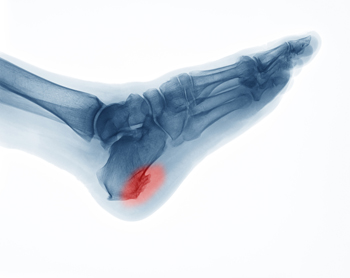
Heel spurs are bony growths that develop on the underside of the heel bone due to prolonged stress, inflammation, or repetitive strain. They often form in response to plantar fasciitis, as the body deposits calcium in an attempt to repair chronic microtears in the fascia. While many heel spurs cause no symptoms, others lead to pain, especially during walking or standing. Calcaneal spurs, which form on the calcaneus, or heel bone, are one of the most common types. Risk factors include high-impact activities, obesity, flat feet, and wearing unsupportive footwear. Treatment focuses on reducing inflammation with stretching, orthotics, and supportive shoes. If you have a heel spur and it is causing pain, it is suggested that you see a podiatrist for an evaluation and appropriate treatment solutions.
Heel spurs can be incredibly painful and sometimes may make you unable to participate in physical activities. To get medical care for your heel spurs, contact Gabrielle Clark, DPM from LA Feet Foot & Ankle Center, Inc. Our doctor will do everything possible to treat your condition.
Heels Spurs
Heel spurs are formed by calcium deposits on the back of the foot where the heel is. This can also be caused by small fragments of bone breaking off one section of the foot, attaching onto the back of the foot. Heel spurs can also be bone growth on the back of the foot and may grow in the direction of the arch of the foot.
Older individuals usually suffer from heel spurs and pain sometimes intensifies with age. One of the main condition's spurs are related to is plantar fasciitis.
Pain
The pain associated with spurs is often because of weight placed on the feet. When someone is walking, their entire weight is concentrated on the feet. Bone spurs then have the tendency to affect other bones and tissues around the foot. As the pain continues, the feet will become tender and sensitive over time.
Treatments
There are many ways to treat heel spurs. If one is suffering from heel spurs in conjunction with pain, there are several methods for healing. Medication, surgery, and herbal care are some options.
If you have any questions feel free to contact our offices located in New Orleans, and Metairie, LA . We offer the latest in diagnostic and treatment technology to meet your needs.
Heel Pain Can Be Treated!
Foot Health Tips for Diabetic Patients
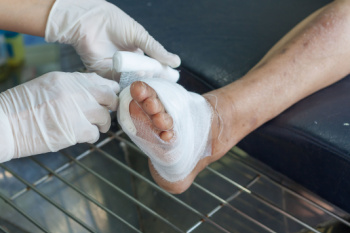
For diabetics, proper foot care is essential to prevent complications such as infections, poor circulation, and nerve damage. One of the most important steps is wearing well-fitting shoes, as ill-fitting shoes can cause blisters, sores, and ulcers that can lead to serious infections if not promptly treated. It is also beneficial to select shoes with good support and cushioning. Regularly elevating the feet helps improve circulation, which is vital for diabetic patients, as poor circulation can lead to slower healing. Wiggling the toes and stretching the feet can encourage blood flow and prevent stiffness. Regular exercise, such as walking or foot-specific stretches, can also promote circulation and strengthen the muscles in the feet. Checking the feet daily for cuts, blisters, or any signs of irritation is vital. If you have diabetes, it is strongly suggested that you are under the care of a podiatrist who can help you to manage this serious condition.
Diabetic foot care is important in preventing foot ailments such as ulcers. If you are suffering from diabetes or have any other concerns about your feet, contact Gabrielle Clark, DPM from LA Feet Foot & Ankle Center, Inc. Our doctor can provide the care you need to keep you pain-free and on your feet.
Diabetic Foot Care
Diabetes affects millions of people every year. The condition can damage blood vessels in many parts of the body, especially the feet. Because of this, taking care of your feet is essential if you have diabetes, and having a podiatrist help monitor your foot health is highly recommended.
The Importance of Caring for Your Feet
- Routinely inspect your feet for bruises or sores.
- Wear socks that fit your feet comfortably.
- Wear comfortable shoes that provide adequate support.
Patients with diabetes should have their doctor monitor their blood levels, as blood sugar levels play such a huge role in diabetic care. Monitoring these levels on a regular basis is highly advised.
It is always best to inform your healthcare professional of any concerns you may have regarding your feet, especially for diabetic patients. Early treatment and routine foot examinations are keys to maintaining proper health, especially because severe complications can arise if proper treatment is not applied.
If you have any questions please feel free to contact our offices located in New Orleans, and Metairie, LA . We offer the newest diagnostic and treatment technologies for all your foot and ankle needs.
Wounds That Don't Heal Need to Be Checked
Types of Foot Wounds
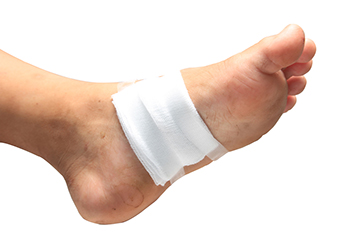 Wounds on the feet can result from various causes, including injuries, friction from ill-fitting shoes, or underlying health conditions like poor circulation or nerve damage. Prompt attention to any foot wound is essential, as even a minor foot wound can progress rapidly if not treated. Peripheral arterial disease, which restricts blood flow to the feet, can hinder healing and increase vulnerability to infection. Additionally, nerve damage may reduce sensation, making it difficult to detect injuries. Infected wounds may lead to redness, swelling, warmth, or systemic symptoms such as fever or chills. A podiatrist can diagnose and manage foot wounds by assessing circulation, sensation, and the extent of the injury. Treatment may involve cleaning the wound, removing damaged tissue, and addressing underlying issues like pressure or improper footwear. If you have a foot wound, it is suggested that you make an appointment with a podiatrist for a diagnosis and treatment options.
Wounds on the feet can result from various causes, including injuries, friction from ill-fitting shoes, or underlying health conditions like poor circulation or nerve damage. Prompt attention to any foot wound is essential, as even a minor foot wound can progress rapidly if not treated. Peripheral arterial disease, which restricts blood flow to the feet, can hinder healing and increase vulnerability to infection. Additionally, nerve damage may reduce sensation, making it difficult to detect injuries. Infected wounds may lead to redness, swelling, warmth, or systemic symptoms such as fever or chills. A podiatrist can diagnose and manage foot wounds by assessing circulation, sensation, and the extent of the injury. Treatment may involve cleaning the wound, removing damaged tissue, and addressing underlying issues like pressure or improper footwear. If you have a foot wound, it is suggested that you make an appointment with a podiatrist for a diagnosis and treatment options.
Wound care is an important part in dealing with diabetes. If you have diabetes and a foot wound or would like more information about wound care for diabetics, consult with Gabrielle Clark, DPM of LA Feet Foot & Ankle Center, Inc. Our doctor will assess your condition and provide you with quality foot and ankle treatment.
What Is Wound Care?
Wound care is the practice of taking proper care of a wound. This can range from the smallest to the largest of wounds. While everyone can benefit from proper wound care, it is much more important for diabetics. Diabetics often suffer from poor blood circulation which causes wounds to heal much slower than they would in a non-diabetic.
What Is the Importance of Wound Care?
While it may not seem apparent with small ulcers on the foot, for diabetics, any size ulcer can become infected. Diabetics often also suffer from neuropathy, or nerve loss. This means they might not even feel when they have an ulcer on their foot. If the wound becomes severely infected, amputation may be necessary. Therefore, it is of the upmost importance to properly care for any and all foot wounds.
How to Care for Wounds
The best way to care for foot wounds is to prevent them. For diabetics, this means daily inspections of the feet for any signs of abnormalities or ulcers. It is also recommended to see a podiatrist several times a year for a foot inspection. If you do have an ulcer, run the wound under water to clear dirt from the wound; then apply antibiotic ointment to the wound and cover with a bandage. Bandages should be changed daily and keeping pressure off the wound is smart. It is advised to see a podiatrist, who can keep an eye on it.
If you have any questions, please feel free to contact our office located in New Orleans, and Metairie, LA . We offer the newest diagnostic and treatment technologies for all your foot care needs.
Various Causes of Poor Foot Circulation
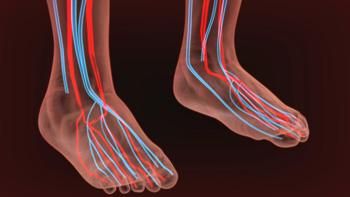
Poor foot circulation can result from several underlying health conditions. Atherosclerosis, the buildup of plaque in the arteries, is one of the primary causes, as it restricts blood flow to the feet and other extremities. Peripheral artery disease, or PAD, often a result of atherosclerosis, further narrows the arteries, leading to reduced circulation and causing pain, cramping, and numbness. Diabetes also contributes to poor circulation, as high blood sugar levels can damage blood vessels and nerves, impairing the flow of blood to the feet. Obesity, a sedentary lifestyle, and smoking all increase the risk of poor circulation by putting extra strain on the cardiovascular system. These factors can lead to complications such as slow-healing foot wounds, infections, and even tissue damage. If you have any of the above symptoms, it is suggested that you consult a podiatrist who can help you to manage this condition.
Poor circulation is a serious condition and needs immediate medical attention. If you have any concerns with poor circulation in your feet contact Gabrielle Clark, DPM of LA Feet Foot & Ankle Center, Inc. Our doctor will treat your foot and ankle needs.
Poor Circulation in the Feet
Poor blood circulation in the feet and legs is can be caused by peripheral artery disease (PAD), which is the result of a buildup of plaque in the arteries.
Plaque buildup or atherosclerosis results from excess calcium and cholesterol in the bloodstream. This can restrict the amount of blood which can flow through the arteries. Poor blood circulation in the feet and legs are sometimes caused by inflammation in the blood vessels, known as vasculitis.
Causes
Lack of oxygen and oxygen from poor blood circulation restricts muscle growth and development. It can also cause:
- Muscle pain, stiffness, or weakness
- Numbness or cramping in the legs
- Skin discoloration
- Slower nail & hair growth
- Erectile dysfunction
Those who have diabetes or smoke are at greatest risk for poor circulation, as are those who are over 50. If you have poor circulation in the feet and legs it may be caused by PAD and is important to make changes to your lifestyle in order to reduce risk of getting a heart attack or stroke. Exercise and maintaining a healthy lifestyle will dramatically improve conditions.
As always, see a podiatrist as he or she will assist in finding a regimen that suits you. A podiatrist can also prescribe you any needed medication.
If you have any questions please feel free to contact our offices located in New Orleans, and Metairie, LA . We offer the newest diagnostic and treatment technologies for all your foot and ankle needs.

